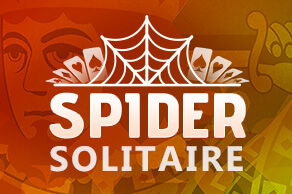MANY POLITICAL cartoonists are individualists by nature. Even if situated in a newsroom, they might well be set off in a divided room or space, surrounded by a small fortress of sable brush sentries and a large drafting table as drawbridge, a computer screen flanking their side lest an intervening editor mount a surprise offensive. Yes, when you live for so long in your head each day, warring with visual metaphors till a victor emerges, it can be a blessing to toil while shielded within a separate peace.
So when these cartoonists win temporary release and this special and endangered species gathers around watering holes, being the leader of these bright and gifted and opinionated individuals can be a thrill and a joy — basking in the camaraderie — while also a bit like herding caterwaulers.
For a term just ended, veteran Sacramento Bee cartoonist Jack Ohman has been that leader, as president of the Association of American Editorial Cartoonists. The AAEC just held its national conference in Columbus, Ohio (famously home of the OSU’s Billy Ireland Cartoon Library & Museum [or as I like to call it, the CLAM]), where the nation’s cartoonists talked shop, and shared ideas — and awarded the CRNI Courage in Cartooning honor to imprisoned Iranian artist Atena Farghadani.
As Ohman hands the AAEC reins over to the new president, newly minted Pulitzer winner Adam Zyglis of the Buffalo News, Comic Riffs asked the Bee cartoonist to reflect on an administration marked by everything from industry cuts to the Charlie Hebdo attack:
MICHAEL CAVNA: Congratulations, Jack, on a successful administration as the head of the AAEC — a group that can be simultaneously unified in its passion for an ever-challenged profession, and yet divided over any number of industry issues. How does it feel to hand over to the gavel to your successor, knowing what ideas and energy you brought to the job?
JACK OHMAN: Well, I am thrilled to have Adam Zyglis as my successor. He’s taking the job at the right moment for us, and he is a great success story in cartooning. Besides being a really delightful artist, he’s very thoughtful and energetic. I feel good about my tenure. We had a strong board, and we moved the organization forward on multiple fronts: [an] international human-rights, internal organization leading to a more stable funding model, and making clear statements about things we should care about as a group. I’m glad to be stepping aside to devote more time to my presidential library.
MC: Related to that, what were some of the highlights for you during your [term in office], professionally or personally, and were there any key disappointments — perhaps things you wanted to change more, or affect more?
JO: First, the Charlie Hebdo massacre colored everything. It was profoundly shocking, and everyone in political cartooning was called upon to speak up about what we do and why it’s important. No one could have dreamed that this event would happen. At the convention, we had bomb-sniffing dogs, a SWAT team, uniformed sheriffs and police, as well as undercover police — the entire time we were there. So it’s a new world.
Second, this group has had a lot of body blows — we lost several major [newspaper staff] positions in the last year, and that was hard to watch. I wish we could have more impact on the thinking of the people who own newspapers. Good cartoonists are popular features, and as more and more newspapers are being cut, the owners often go to the cartoonist position before they cut another position. The only way we can save ourselves is to do intellectually honest work that says something fresh; that’s the strongest argument we can make for ourselves.
I took the job because I love the people in the group — period. I started as a cartoonist in Columbus at age 20, taking over Jeff MacNelly’s client list, so it was very poignant to return to Columbus after 34 years and be president of the AAEC –something in 1981 I would never have guessed I’d do. We’re going to jackhammer the website, which is very Commodore 64-ish now. I’ve done most everything I said I would do, so that’s good.
Third, we’re going to expand our membership base to include international cartoonists as associate members, assuming the membership approves. We are going to create several awards to honor people who make a difference in our profession.
MC: So coming out of the AAEC conference this past weekend in Columbus, were any panels, or people, particularly enlightening or inspiring or rejuvenating for you — be it animators or Charlie Hebdo or the immortal [event speaker] Mike Peters? Maybe sessions that, or talent who, make you hopeful about the future of American political cartooning?
JO: I wanted to come up with a more art-driven program at the convention, highlighting people who were not newspaper cartoonists exactly, but people who do what we do in a broader sense. Steve Brodner was a main “get” for me, and he enthusiastically agreed to come. Everyone loved his presentation, which was about his current project about drawing all the presidents since McKinley. He even went to McKinley’s home in Canton while he was in Columbus.
I also wanted to feature Steve Sack, which he initially didn’t want to do. He’s a Minnesotan, like me, but he’s rather shy, unlike me. We finally got him to show his outside art, which just left everyone agog. Liza Donnelly showed that you can do political cartoons outside of the context of the standard form, so she was great, too. Jules Feiffer was supposed to fly in, got sick, so we did a Skype with him and he was hilarious and insightful. Nate Beeler thought he was like the Wizard of Oz, looming up on the screen while we asked him questions. The Puck panel with Rich West and Michael Kahn was wonderful, and Peter Kuper was outstanding. I thought all the panelists really brought it.
I invited Jeff Danziger, who is a personal hero of mine, and I wanted him to keynote as well as circulate around the other folks. We had Steve Hamaker and Dwayne Booth, who gave very interesting presentations about color and animation. I thought Mike Thompson’s animations were hilarious this year. Ann Telnaes and Mark Fiore are always great, too. We had a thoughtful Hebdo panel, without it being too much; Garry Trudeau would have approved. “Bro” Russell and the cartoonists who all came in from CRNI [Cartoonists Rights Network International] were moving. Adam Zyglis, Gary Varvel and Chip Bok had a very interesting exchange that a lot of folks talked about. We had Kal and Joel pitching in at key moments, as they are natural performers and did the usual great job. Mike Peters just lights up any room he’s in, and I was so thrilled with him — not just his presentation but his hanging around in the bar. He’s a lovely person. I’m hopeful about editorial cartooning, but we have to fight for our place at the table — that means doing smart work and advocating for ourselves.
MC: If you were to offer two or three key points to your successor as AAEC prez — perhaps lessons learned from your experience — what might they be?
JO: I would tell Adam nothing he’s not already going to do. He’s a wise person. [The Post’s] Ann Telnaes will be president in 2017, and I was particularly pleased she’s taking a leadership role. They both have leadership personalities, and they are both people who take strong positions. All I would say is that watch out for the unexpected, because of the Charlie Hebdo experience. We’ve had some really good presidents the past few years, and I wanted to make sure I didn’t mess up what they had done, and I wanted to make sure we had a good set of future leadership candidates in place: Nate Beeler, Matt Bors, Kevin Siers and Liza Donnelly come to mind.
MC: Now, we know that newspaper editorial cartooning is ever changing from when we entered the profession in a previous millennium. On one hand, staff positions have dwindled to mere dozens, yet our culture is more image-saturated, and meme-prone, and perhaps even more political satire-packed than ever before. Are you hopeful about the art form’s ability to adapt to stay relevant and maybe even vital — or might the central impact of the powerful still editorializing graphic image be superseded by other artistic forms of satiric commentary?
JO: Not everyone wants to be an animator. I don’t. But I am interested in doing short videos that may or may not have drawings in them. I do think that even someone who is maybe eligible for a retirement community [barely] can do new things, and making adjustments to what we do is not that hard. I’ve done some graphic novel-type pieces for PBS NewsHour and Medium.com, and that’s exciting to me. Drawing to be seen on a phone is a necessity now, and we can’t let ourselves get too stuck in what we have always done.
I see exciting work all the time. Peter Dunlap-Shohl is amazing. Brodner is amazing. Matt Bors is a genius and doing really thought-provoking stuff, in addition to being a cartoonpreneur. Dan Perkins [aka Tom Tomorrow] invented a whole genre and the journalism culture is just now getting around to recognizing him. Jen Sorensen does fascinating and compelling cartoons. Ted Rall has always done really interesting work and has a book side to his portfolio that is really impressive. People who evolve stay relevant. We have a lot of evolvers in our group. I think we have a place in newspapers as long as we adapt along with them. I keep telling people don’t just do one thing: I’m associate editor, I write editorials each week, I have a column on Sunday, and I do five cartoons, one which is outside the traditional form. And, of course, I do light HVAC maintenance around The Bee.
MC: Lastly, let me ask: At midcareer, you seem to have especially become magnetic around awards hardware. Now working in Sacramento, with your art is as engaging and as deft in its draftsmanship as ever, how do you feel about your work, and creative purpose — is this an excellent time to be Jack Ohman?
JO: It’s an excellent time to be me, except for the blood-pressure medication and the constant chore of keeping my hair at bay. I really feel like I am doing the work of my career, and I enjoy each day. I started winning awards when I stopped thinking about winning awards. I started liking my work when I listened to my own voice, and not feeling so constrained by the old model. When you like your work, others will probably like it too.












